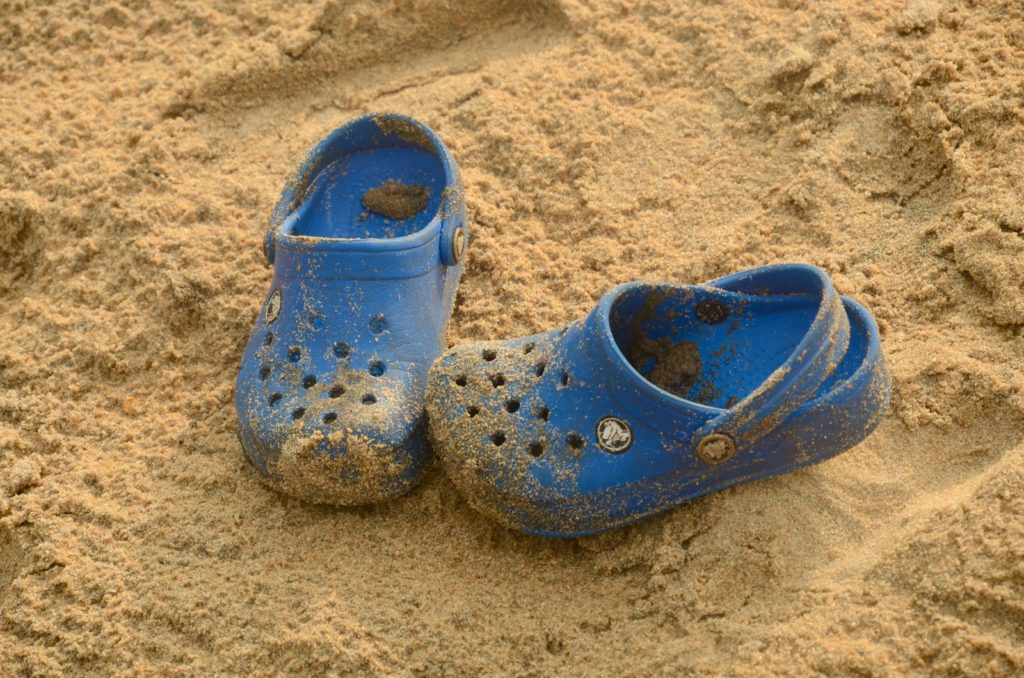
Born as a meme before the term “meme” had even been coined, Crocs have experienced a journey as peculiar as their design. Bursting onto the scene in the early 2000s, these foam clogs were quick to create a buzz. However, as swiftly as they arrived, they faded into obscurity, only to make a comeback during the pandemic. Here is the curious story of how a shoe widely criticized for its aesthetics rose to popularity not once, but twice.
Humble Beginnings: Three Dudes and a Boat
In 2002, three Colorado natives named Scott Seamans, Lyndon Hanson, and George Boedecker Jr., discovered a Canadian brand boating clog, Foam Creations, during their fishing trip in the Caribbean Sea. Captivated by the comfort and waterproof nature of the clogs, they acquired the rights to the proprietary foam technology called ‘Crosslite’. They later released their version of the footwear – a foam clog they called Crocs, drawing inspiration from the amphibious reptile that thrives both on land and in water.

From Ugly to Uber-Popular
Despite their initial reception being less than favorable, with high fashion circles criticizing their looks, Crocs quickly turned the tide in their favor. Hated for their quirky design, the shoes soon found themselves in the middle of a fashion rebellion, rising to mainstream popularity in the early 2000s. Their response to this unexpected success was to expand into new markets, introduce new product lines, and open retail stores worldwide.
A Halt in Momentum
In 2008, the financial crisis hit many businesses hard, and Crocs was no exception. Their stocks plummeted, layoffs were abundant, and the company found itself on the brink of extinction. Crocs seemingly vanished from the scene, becoming a relic of a trend that disappeared without a trace. The questions remains, with Crocs still being available to the mainstream, will it ever have the longevity and following that a brand like Vans has?
Revival of the Unconventional
Against all odds, Crocs made a comeback. In their hiatus, they streamlined their product lines, focusing on their flagship product – the clog. This revival came right around the onset of the pandemic, as comfort took precedence over aesthetics for homebound individuals. Crocs re-entered the scene with a boom, quadrupling their sales in 2020.
Gen Z and Celebrity Endorsements
Gen Z’s embrace of Crocs, the emergence of the ‘Vsco girl’ trend, and celebrity endorsements from stars like Justin Bieber and Post Malone further propelled the Crocs resurgence. The footwear’s unique, unfashionable look became a statement, an act of rebellion against traditional societal views of beauty. Limited edition “croc drops” from celebrity collaborations fueled their hype, turning these clogs into must-have collectible items.
Are Crocs Here to Stay?
This revival begs the question: Are Crocs a boom-and-bust footwear company, or do they have longevity in the market? The shoes have garnered a following due to their comfort, affordability, and durability, becoming a favorite among medical professionals, restaurant workers, and hikers. Additionally, the simplicity and durability of their design make them cost-effective to produce and less likely to have weak points, extending their lifespan significantly.
Environmental Footprint
Despite being made of a proprietary resin material, the Crocs design offers the potential for easy recycling due to its single-material composition. The company has also taken steps towards sustainability, incorporating bio-based Crosslite foam technology, aiming to achieve net-zero carbon emissions by 2030, and exploring environmentally friendly packaging alternatives.
Conclusion
In retrospect, Crocs’ journey may appear as a fluctuating fashion trend. However, the clog’s story shows an unexpected evolution of a shoe that carved out its unique niche in the fashion industry, turning its unconventional aesthetic into a strength. Crocs’ tale serves as a testament to the durability of design and the unpredictable turns of consumer trends. One thing is certain: whether you love them or hate them, Crocs have left a footprint that’s hard to ignore.
Key Takeaways
- The Rise, Fall, and Comeback of Crocs: The Crocs journey started in 2002 when three friends from Colorado stumbled upon a Canadian foam shoe while on a fishing trip in the Caribbean. Despite initial disregard and mockery, the unique shoes quickly gained popularity, reaching a zenith before crashing in 2008. Recently, the trend resurfaced during the pandemic, with sales quadrupling in 2020.
- The Role of Shopify and Business Reinvention: The shift in Crocs’ strategy, from rapid expansion into various products to focusing on their core product, the clog, played a significant role in their comeback. Their acquisition of a company called Gibbets, which makes decorative charms, was another smart business move.
- The Power of Celebrity Influence and Limited Editions: Crocs tapped into the influence of celebrities like Justin Bieber and Post Malone, creating limited-edition “Croc drops”. This strategy not only created urgency among consumers but also turned these shoes into collectible items.
- The Durability and Potential Sustainability of Crocs: The foam shoes are highly durable, serving a multitude of practical purposes for people from various walks of life. Crocs, made from a patented foam technology, are easy to produce, potentially recyclable, and carry a low carbon footprint. Despite current limitations in recycling facilities for this material, the company’s shift towards sustainable production hints at future potential for a greener shoe industry.
